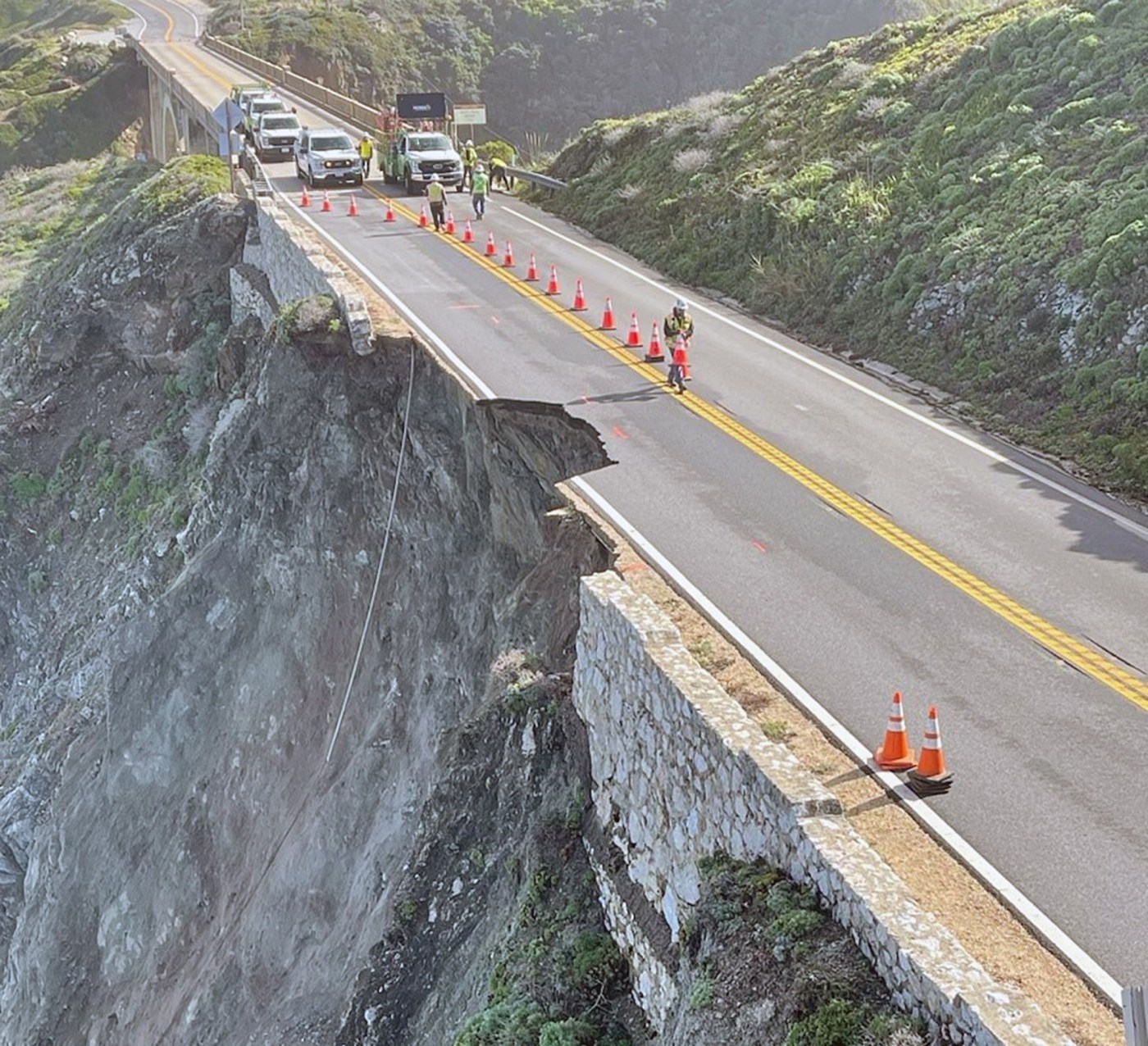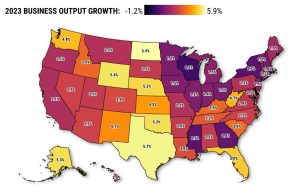SALINAS – Work on the Rocky Creek slip-out of Highway 1 continues to be focused on stabilizing the edge of the roadway because once that is done a temporary signal system will be installed, opening up the roadway to unrestricted traffic under one-way traffic control and providing vital visitor and business flow to the Big Sur area.
When the edge stabilization work will be complete should be determined sometime later this week, according to Caltrans.
But with rain in the forecast for Saturday, Caltrans will be suspending the twice-daily convoys to and from the Big Sur area restricted to locals and essential workers only. That information was made available at the County of Monterey news briefing on Wednesday.
RELATED: Big Sur Marathon: Changes to the course approved, race set for April 28
“The last convoys will continue 7 a.m.-5 p.m. Wednesday, Thursday and Friday, but we’re canceling the Saturday convoys,” said Kevin Drabinski, Caltrans District 5 spokesman. “There’s an expectation that the convoys will resume at 7 a.m. on Sunday, but we’re going to wait until we get an update from the National Weather Service this Friday morning to confirm the feasibility for the Sunday resumption of convoys.”
Work on the slip-out which occurred March 30 includes Caltrans’ conducting vital geotech assessments which have allowed the convoys and implementing a traffic management system for the corridor including signage advising of the closures on Highway 1.
“On the northbound shoulder area we went in and created a little extra room,” explained Drabinski. “We improved the drainage on the northbound shoulder and also widened the shoulder to give the northbound lane a little extra room.”
K-rail, the concrete barriers placed along the center line to help channelize the convoy passage, have been installed. Caltrans has also developed and completed design and construction details for the stabilization for the edge of the roadway.
That’s been the focus since day one. Developing a design, and finalizing the construction details, said Drabinski. Now Caltrans has been able to engage a contractor who has mobilized to the site.
“We hope later this week to release an estimate of when that edge stabilization work will be complete, that will be an important milestone for everyone,” he stressed.
Work by contracted crews began Tuesday with drilling, installing and grouting 25-foot vertical rock dowels through the southbound lane toward the west edge of the roadway pavement.
Drabinski said it is the first step of stabilizing the edge and said Caltrans should have equipment on site by Thursday that will allow going to the next phase of stabilization.
“That is a little bit more adventurous work in which they’ll repeat the drilling of these essentially inch-and-a-quarter rebar dowels horizontally, so reaching out over the edge of the pavement and then having crew members drill through the entire run of the failure area,” Drabinski said. “Then they’ll install reinforced shotcrete on the vertical face of the repair. Hanging off the edge and drilling is going to take a little longer than the vertical drilling right in the roadway.”
Zeke Dellamas, Caltrans emergency manager, said shotcrete is concrete that is sprayed on, manually applied by a worker from a crane, that sticks to the vertical face of the slip-out. It reinforces and connects to different bolts that have been applied horizontally to help distribute the load to the rock bolts that are used in the stabilization effort.
Related Articles
Big Sur Marathon: Changes to the course approved, race set for April 28
After 60 car crash deaths on Pacific Coast Highway, state legislators say enough is enough
Reminder: Closure of Highway 1 in Santa Cruz County set Saturday for 24 hours
Evacuation warning issued for Big Sur residents impacted by partial road collapse
Big Sur Marathon: Landslide likely to change route of big April 28 race
“Until we are able to stabilize the edge of the roadway, we’ll continue using convoys to move local residents and essential workers only through the area,” said Drabinski. “Once the roadway edge is stabilized, crews will install a temporary signal system and open Highway 1 to unrestricted traffic under one-way traffic control. We hope to have an estimate of when the edge stabilization will be complete sometime later this week.”
Dellamas said Caltrans is also looking at what the final repair at the slip-out will look like. He described the repair as being a viaduct, a half-width bridge, but more details will be presented once they have been determined and finalized.
A viaduct is a bridge usually supported by arches that carries a road over an open space.
Caltrans estimates the completed work on the repair of the Rocky Creek slip-out to be $25 million.
California Highway Patrol spokesperson Jessica Madueno said an estimated 500 to 600 vehicles are in the convoys on a daily basis with CHP officers screening each vehicle. With that about 50 vehicles per day are found to be attempting to travel Highway 1 south to the Los Angeles or Santa Barbara areas and are being turned back. Convoys are just for locals and essential workers and restricted to the 7 a.m. and 5 p.m. travel times.
Kirk Gafill, president of the Big Sur Chamber of Commerce, is grateful for the time change of the convoy that better suits Big Sur businesses and workers. But with nearly two weeks of a hard closure of Highway 1, the impact is getting increasingly more burdensome. His “big ask” of Caltrans is to determine when the road will be stabilized and return access to and from Big Sur for businesses and individuals.












